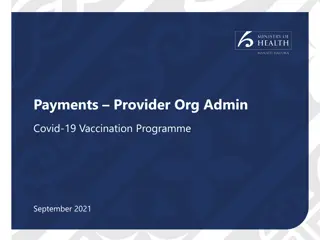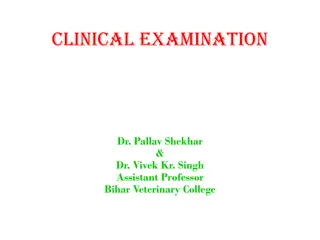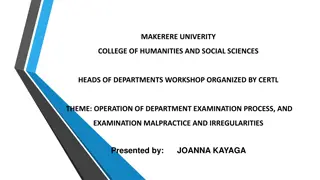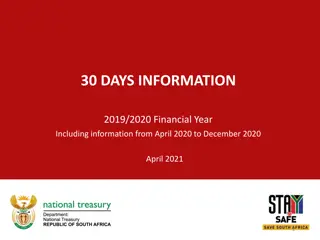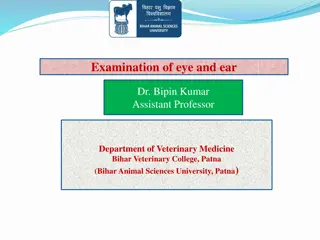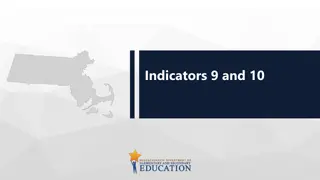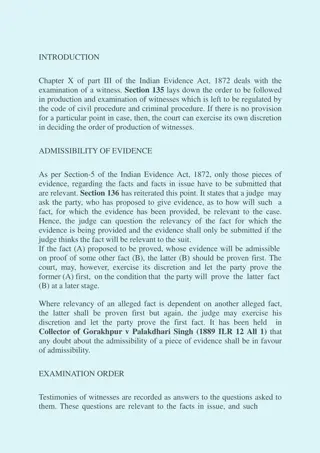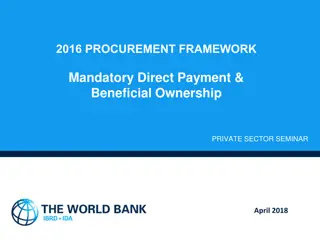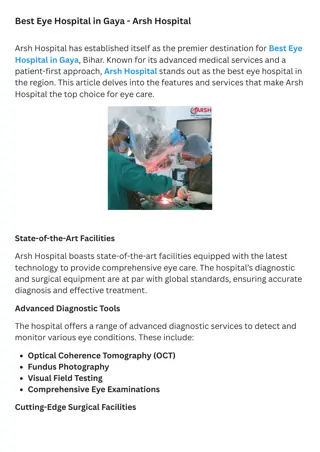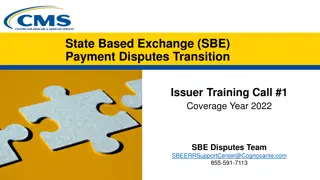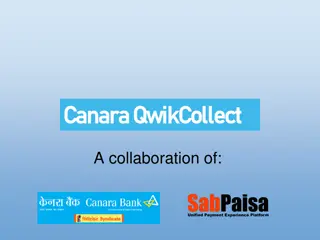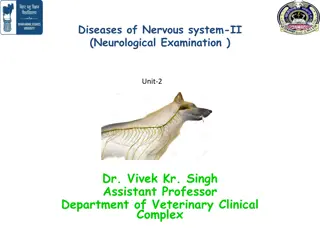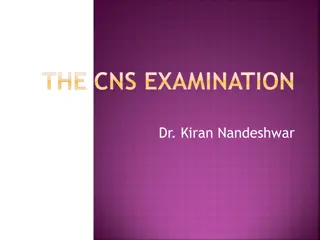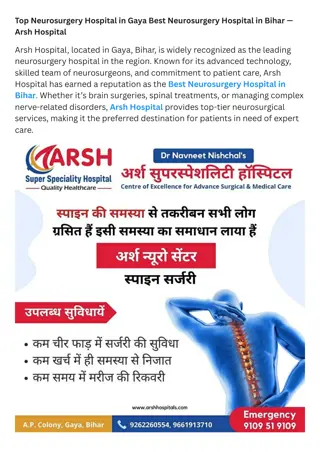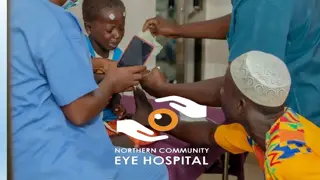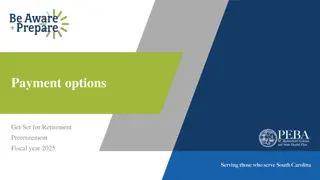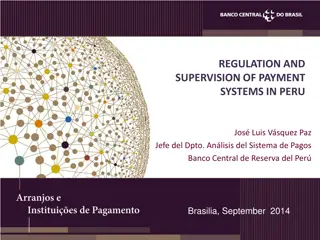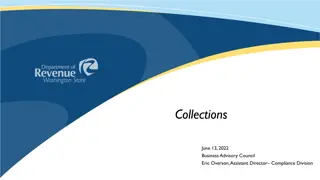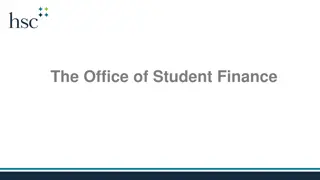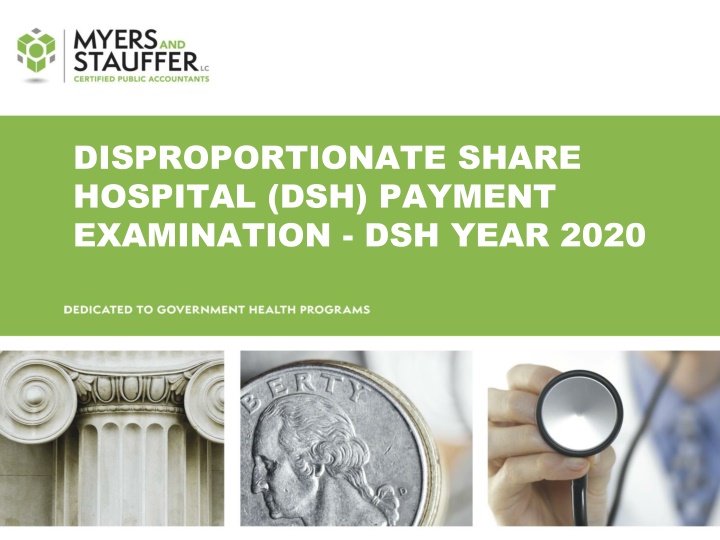
Disproportionate Share Hospital Payment Examination 2020
Information on Disproportionate Share Hospital (DSH) payments and examination process for the year 2020, including timeline, survey updates, reporting instructions, and contact details of presenters.
Download Presentation

Please find below an Image/Link to download the presentation.
The content on the website is provided AS IS for your information and personal use only. It may not be sold, licensed, or shared on other websites without obtaining consent from the author. If you encounter any issues during the download, it is possible that the publisher has removed the file from their server.
You are allowed to download the files provided on this website for personal or commercial use, subject to the condition that they are used lawfully. All files are the property of their respective owners.
The content on the website is provided AS IS for your information and personal use only. It may not be sold, licensed, or shared on other websites without obtaining consent from the author.
E N D
Presentation Transcript
DISPROPORTIONATE SHARE HOSPITAL (DSH) PAYMENT EXAMINATION - DSH YEAR 2020
JOINING INSTRUCTIONS We are using Microsoft Teams in 2022. Once you are in the meeting, please use the microphone button to toggle between mute/unmute. We prefer participants to stay muted unless they want to ask a specific question during the training. We will record this session to have the ability to review the training in the future.
WEB SITE WITH PRESENTATION 2020 training and 2020 grid will be saved at our new site: https://www.myersandstauffer.com/client-portal/minnesota/
PRESENTERS CONTACT INFO Michal Slavkovsky Sr. Manager in Boise Office Myers and Stauffer LC 8555 W. Hackamore Drive, Suite 100 Boise, ID 83709 (800) 336-7721 or direct (208) 685-1570 michals@mslc.com Trena Fenix-Sato Health Care Manager TSato@mslc.com
AGENDA DSH Year 2020 Timeline 2020 DSH Survey Updates Medicaid Eligible Treatment for 2020 DSH and future DSH years DSH Examination 2019 Issues Recap State Specific Survey Reporting Overview (In-State Medicaid FFS, Medicaid Managed Care (PMAP), In-State Medicare FFS Crossovers (Medicare with Medicaid Secondary), In-State Other Medicaid Eligibles (Not Included Elsewhere), State/Local Indigent Care Program, Out-of- State, and Uninsured) Children s and Gillette Reporting Instructions Survey Checks and Edits Questions?
DSH EXAMINATION TIMELINE Surveys uploaded on the SFTP site or emailed on April 14, 2023. Surveys are due by June 30, 2023 (Hospitals that decide to opt out should submit the opt-out letters to Susan Hammersten or Caprice Stark at DHS). Extensions can be requested and will be considered. We will try to be flexible and accommodating and we will work with providers. Draft Report to the department by September 30, 2023. Final report to CMS by December 31, 2023.
2020 DSH SURVEY UPDATES/REMINDERS Section C 2020 DSH Survey Part 1 includes additional lines for reporting non-claim specific payments for hospital services. Line 1 is for Medicaid Supplemental Payments for hospital services such as MERC and Other Medicaid non-claim specific payments. Line 2 is for Medicaid Managed Care Supplemental Payments for hospital services which should include all non-claim specific payments such as lump sum payments for quality payments, bonus payments, capitation payments received by the hospital, or other incentive payments. Line 3 is the total of lines 1 and 2 and that would be the amount used for calculation of DSH limit. IMPORTANT PAYMENTS THAT ARE REPORTED ON PART 1 SURVEY SHOULD NOT BE DUPLICATED AND REPORTED ALSO ON PART 2 SURVEY SECTION H (most likely line 138 of Managed Care column).
2020 DSH SURVEY UPDATES Medicaid Managed Care column Similar to 2019 - Report PMAP primary only in Medicaid Managed Care column and report other PMAP eligible claims in In-State Other Medicaid Eligibles column (payments from all payor sources have lines in that column). For the 2020 DSH surveys, Medicare and private insurance payments will be included in the calculation of UCC. Therefore, it is very important to report payments from various payors properly on applicable lines so that we can easily calculate/include MCR and TPL payments in UCC calculation.
MEDICAID ELIGIBLE - TREATMENT FOR 2020 DSH AND FUTURE DSH YEARS On December 27, 2020, President Trump signed the Consolidated Appropriations Act for 2021 into law after it was passed by Congress. CMS published proposed rule on 2/24/2023 with comments closed on 4/25/2023. This proposed rule provides more clarity on how the DSH limit will be calculated. The changes took effect on 10/1/2021 and this proposed rule changes the calculation of a hospital s DSH limit to remove the cost and payments of individuals with Medicare or third-party coverage. This does not impact DSH limit calculations for 2020 and it should not impact 2021 DSH year as well, as it appears this would go into effect starting with the first full DSH year following 10/1/2021, which would be DSH year 2022. Starting in 2022 DSH surveys, Medicaid dual eligible related claims (Medicare Crossovers and Private Insurance Primary and FFS Medicaid or PMAP secondary) will be excluded so providers have only this year and next year to learn how to identify these claims on MMIS reports or internally .
2019 DSH EXAMINATION ISSUES MERC Payments, Supplemental Payments, and DPA Payments Only a few providers did not report any MERC payments or reported them incorrectly; we adjusted based on MERC funding reports that are publicly available. We used 50% of MERC payments based on 2019 MERC funding report and 50% of MERC payments per 2020 MERC funding report. Myers and Stauffer and DHS had agreed on this treatment . A few providers duplicated reporting of supplemental payments; once they were reported on Part 1 and then managed care supplemental payments were reported again in Section E of Part 2 Survey. DPA payments from DHS FFS reports were included and reported as part of Medicaid payments for IP FFS.
2019 DSH EXAMINATION ISSUES Other Medicaid Eligibles (OMEs) From discussions with DHS, it was determined that Other Medicaid Eligibles (OME) claims were included in the state FFS MMIS reports. Due to the inclusion of OMEs in the calculation of UCC, no big issues were found if these claims were not reported in OME columns but were indeed reported. However, as noted previously, starting with 2022 DSH, these claims will need to be excluded then from reporting so the providers should start looking into ways of identifying these claims to make sure that when we get to 2022 DSH surveys, there will be no surprises and these claims will be properly excluded. Not reporting of OMEs in FFS and duals in In-State Managed Care Primary columns will be particularly important for the two Children hospitals due to a rule guiding their DPA payments overpayments. See specific slide on that issue.
2019 DSH EXAMINATION ISSUES MCR Crossover claims We adjusted Medicare payments based on MCR Cost Report settlement when needed using our MCR CR settlement workpaper. Some providers questioned the calculated amounts and we provided supporting work paper for our calculations and reasoning behind it. Please note that the settlement workpaper calculates estimated payments in situations when providers do not report these MCR CR settlement payments. It is the fastest and most efficient way of calculating these settlement amounts based on the logic that looks at overall Medicare payments on MCR CR, compares them to MCR costs on MCR CR and calculates Payment/Cost Ratio. This ratio is then used to impute missing MCR settlement payments based on MCR Xovers costs on the survey.
2019 DSH EXAMINATION ISSUES PMAP Days days were being duplicated (a tip to notice this issue low average routine charge per diem calculated on line 21.01) Payments payments were not reported or support did not indicate that payments were pulled on all the accounts shown in charges file. For instance, a provider might have reported $10 million of PMAP charges on the survey but when payments were queried, total amount of charges on the payment file showed only $7.5 million of charge. If payments are queried separately from charges query, providers need to make sure that charges per payment file reconcile to charges per charges file. This could be observed on some providers that used state s MC report for charges but could not match (find all the accounts) in their internal system and thus payments would be misreported. Duplicated Claims between FFS, PMAP, and OME data sets Myers and Stauffer performed additional testing procedures to remove duplicated claims but providers need to ensure that claims are not duplicated and they are not reported in multiple columns on the survey.
PART 1 SURVEY - SUPPLEMENTAL PAYMENTS Section C: Line 1 - MERC Payments and Other Medicaid Non-Claim Specific Payments. Line 2 - Medicaid Managed Care Supplemental Payments (lump sum payments for full Medicaid Pricing (FMP), supplementals, quality payments, bonus payments, capitation payments received by the hospitals (not by the MCO), or other incentive payments. Line 3 = Line 1 + Line 2 Lump sum payments should be reported either on Schedule C or Section H depending on which basis more appropriately captures these payments. Section C is on calendar year basis these lump sum payments would not be tied to claims related to cost report you are filling out the survey for. Section H is on cost report basis these lump sum payments are somehow determined by claims captured on cost report basis. For example, Blue Cross Blue Shield pays interim payments on claims but also does final settlement on claims. Your Exhibit C most likely captures claims with interim payments so you would need to include the final settlement payment or payback as your supplemental payment.
IN-STATE MEDICAID FFS REPORTING The report format has not changed from last year 3 reports based on Date of Discharge Basis: IPFFS Main, IPFFS RevCds, and OPFFS Main. IPFFS Main Report for IP claims showing total charges and payments by patient account and has all the needed elements such as claim type, funding source, and crossover indication. Providers will use this report to report payments. IPFFS RevCds Report for IP claims showing days and charges by revenue code. This report has all the elements needed including funding source and crossover indication rev codes. Providers will use this report to report days and charges (after grouping them appropriately). NOTE Per DHS, Total Line column charges within this file should be used (instead of Covered Charges) as Non-Covered Charges would not be necessarily non-hospital charges that should be excluded from reporting and DSH limit calculation. OPFFS Main Report for OP claims showing charges by rev codes and payments it has all the needed elements to properly report charges and payments on the survey. DPA payment in the files need to be excluded from total Program Payment to calculate Medicaid Payments that needs to be reported on line 132. Please report payments by each payor on each appropriate line (specifically, TPL payments need to be reported on line 134). Co-Pays and deductibles need to be reported on line 135.
IN-STATE MEDICAID MANAGED CARE PRIMARY Only report 1F PMAP primary claims in this category (bucket) The reasons for this reporting are: 1. No MCR payments line in this category. 2. Grid - outlines reporting of days/charges and payments on the survey depending on type of claim/payor.
IN-STATE MEDICAID MANAGED CARE PRIMARY Ways of reporting PMAP 1. Use the State s MCO reports Providers should have received files in their MNITS mailbox that contained both FFS and MCO reports. There are limitations with using MCO reports as these reports may not include all PMAP accounts (charges and days) and you need to query payments internally (MCO reports do not include payments). DHS believes that days and charges on MCO reports might be used but they encourage providers to check against their internal data. Also, these reports include 1F crossovers and 2S claims so providers deciding to use these reports for days and charges reporting will need to make sure that only 1F non-crossover claims are reported in Managed Care Primary IP and OP columns. In the past, providers struggled with identifying account numbers on these reports that would allow them to cross-reference their internal data and pull payments on these claims. This appeared to be due to managed care modifying account numbers. However, DHS has been instructing managed care plans to include and not modify the account numbers so there should be an easier cross-reference this year. I have reviewed a sample of MCO reports and Hospital Ref Number (HRN)column is included; however, I have also noticed that not all the claims had these numbers included. Also, I am not 100% sure if these HRNs can be easily tracked to internal system to query payments. 2. Use Internal Data By querying internally, you should be able to pull all PMAP claims; however, you may not be able to split between 1F and 2S claims. If that s the case, a reasonable allocation method may need to be used to allocate the PMAP claims to 1F crossovers (should be reported in Other Medicaid Eligibles column),1F non-crossovers (these are PMAP primary and should be reported in Managed Care column), 2S Non-crossovers (report in State Only column) and 2S Crossover (exclude from reporting) using MCO report (% allocation). 3. Send all your accounts with claims during period under examination (match your Part 2 CR period) to the state for matching and federal/state designation. Matching report would return DSH eligible programs for PMAP eligible patients. Remove duplicated claims shown as PMAP here and also on FFS reports. Pull charges and payments on these accounts from your system and report in appropriate columns. This option is the best and would result in most accurate PMAP UCC.
MEDICARE FFS CROSS-OVERS Use FFS reports received from DHS. Report days, charges, and payments based on the report 1F crossover claims only. If a hospital does not use FFS report numbers for reporting, a detailed reconciliation between hospital s reported number and FFS report at a patient level detail (reconciling items might be: missing charges/days on FFS report, different amount of charges, difference in payments, and possibly other items) must be provided. For Acute hospitals Medicare Cost Report settlement items should be considered, allocated to Medicare dual eligible, and captured on the survey (for instance bad debt, GME, organ acquisition, and other items should be considered to come up with Medicare CR settlement piece that should be reported on the survey). Please refer to Grid but note that when patients are eligible under 2S program (= not Medicaid eligible) for either FFS or PMAP and receive Medicare benefits, they are not considered Medicare Medicaid dual so they have to be excluded from the survey.
OTHER MEDICAID ELIGIBLES (OME) The hospital must report these claims on Exhibit C since they MUST be included in the DSH uncompensated care cost (UCC). These claims should capture all claims for FFS Medicaid eligible and PMAP eligible patients not captured in FFS, Managed Care, or Medicare Crossover columns. Important Commercial/Medicare FFS/Medicare Advantage primary and PMAP eligible claims need to be reported in this column instead of Medicaid Managed Care columns. When the internal query is written to pull all Medicaid FFS and PMAP eligible claims, you should be excluding claims that are already included in In-State Medicaid FFS Primary, Medicaid Managed Care (PMAP primary only), and In-State Medicare FFS Crossovers columns. The remaining claims should be reported in the OME columns as long as they have 1F funding source. Ensure that you separately report Medicaid, Medicare, third party liability (TPL), and self-pay payments in Exhibit C and on the survey. We have seen Exhibits with one payment amount which was not broken out by payor type.
OME REPORTING VERY IMPORTANT!!! Part 1 certification page includes OME certification. Please note that reporting OMEs based solely on FFS report does not meet the requirement for reporting of all OMEs and the surveys will be still considered incomplete. Internal query is needed to capture OME claims. Please also make sure that OME claims are checked against FFS and PMAP eligible claims to ensure that duplicates are not being reported.
STATE FUNDED PROGRAMS Report 2S FFS (non-crossovers) and 2S PMAP (non-crossovers) charges and days in this category. Refer to the GRID for information on payments reporting.
UNINSURED Uninsured charges/days will be reported on Exhibit A and patient payments will be reported on Exhibit B. Exhibit A charges and days need to be reported based on cost report year. Exhibit B patient payments need to be reported on CASH basis (payments received during the cost report year regardless of when the services the payments relate to were provided).
UNINSURED - PRISONERS PRISONERS This never seemed to be an issue in MN but since our firm had a special call on this for other states, we have decided to include a quick summary for reporting: If you can identify prisoners on your Exhibits, exclude costs and payments. If the service is OP, cost and payments need to be excluded for prisoners/inmates of a jail as federal law only makes exceptions for IP services who are inmates of a jail. If the service is IP If a patient was admitted to or residing in a ward in which that patient does not have the same patient rights as other patients, the patient would be considered true prisoner for DSH purposes. Exclude costs and payments. These situations are normally in IMDs (psych) hospitals. Patients in an inpatient hospital setting meeting conditions of participation (for Medicare/Medicaid) when it comes to patient rights should be included in the DSH limit. If these patients were Medicaid eligible, include cost and payments in OME, otherwise, include in Uninsured.
UNINSURED CONT. If BOTH of the following conditions are met, a hospital is NOT required to submit any uninsured data: 1. The hospital s Medicaid shortfall is greater than the hospital s total Medicaid DSH payments for the year. The shortfall is equal to all Medicaid (FFS, MCO, Cross-over, In-State, Out-of-State, Other Medicaid Eligibles, and State Funded Programs) cost less all applicable payments in the survey and non-claim payments such a MERC, Quality Incentive, GME, outlier, and other supplemental payments. 2. The hospital provides a certification that it incurred additional uncompensated care costs serving uninsured individuals.
OUT-OF-STATE Should be provided on Exhibit C and queried internally. In the past, we received certifications from providers stating that they had some OOS Medicaid claims but they were immaterial to overall UCC and would have resulted in additional UCC shortfall. We accepted that reporting only after considering materiality and risks. Out-of-State DSH payments received need to be reported in section E of survey Part 2, line 8 (it appears that 4 MN hospitals received some OOS DSH payments from Wisconsin during 2020).
CHILDRENS HEALTH CARE AND GILLETTE HOSPITAL SPECIAL INSTRUCTIONS Due to statutory language related to alternative IP payments rate that applies to these two hospitals for DSH years in which the commercial insurance costs and payments are included (would be applicable for 2020 DSH), additional support and more strict reporting of OMEs is required. 1. OMEs cannot be reported in FFS or Managed Care primary columns and have to be reported in OME columns. 2. The providers need to provide a breakout/reconciliation of FFS Medicaid and identified OME claims in FFS reports provided by DHS.
SURVEY CHECKS AND EDITS Additional Edits (great self-review tools) In the far right column of Sections H & I, you will see an edit message if your total charges or days by cost center exceed those reported from the cost report in Section G of the survey (you should see a yellow highlighted row on the survey in Sections H and I). This should indicate that you either have a typo on your survey or your grouping of charges/days on the survey does not match grouping of charges as performed on the Medicare Cost report. Please clear these edits prior to submitting the survey. Medicare Crossover Days Reporting if total reported days in this category exceeds total Medicare days on the Medicare Cost Report, the days section will be highlighted and error message will appear. We added a separate calculation of % of each cost center on the survey comparing to the cost report (see column AY). This could help providers when these % might not appear reasonable and may indicate issue with grouping of days/charges on the survey. Calculated payments as a percentage of cost by payer (at the bottom). Review percentage for reasonableness.
OTHER INFORMATION Please use the DSH Part I Survey Submission Checklist when preparing to submit your surveys and supporting documentation. Please upload the filled out surveys and supporting documentation to the SFTP site. Or mail if necessary to: Myers and Stauffer LC Attn: Michal Slavkovsky 8555 W. Hackamore Drive, Suite 100 Boise, ID 83709 (800) 336-7721 michals@mslc.com Note: Exhibits A-C include protected health information and must be sent accordingly (no special protection if uploaded on the SFTP site but password protected when mailing).

